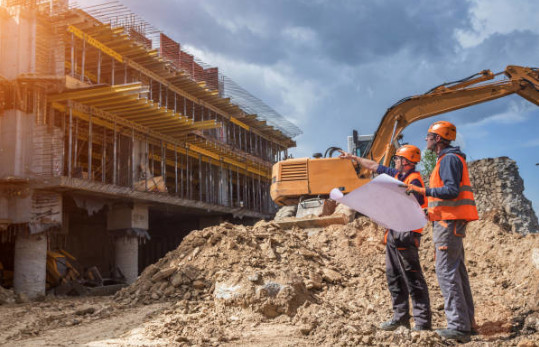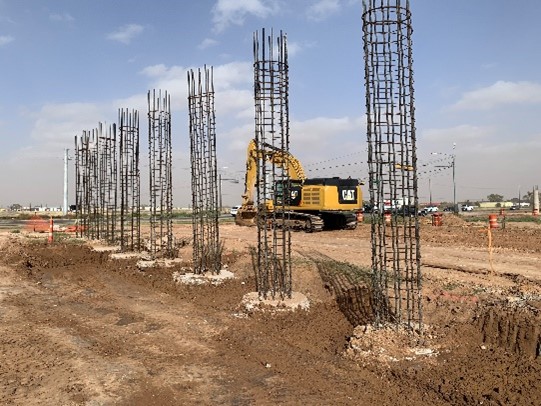Expert Civil Geotechnical Engineering Services for Intricate Projects
Expert Civil Geotechnical Engineering Services for Intricate Projects
Blog Article
Exactly How Consulting Engineers Enhance Geotechnical Engineering Projects: Insights Into Their Expertise, Methodologies, and Collaborative Approaches
Consulting engineers are crucial in enhancing geotechnical design jobs, applying their specialized expertise to navigate the intricacies of subsurface problems. Their collective approaches foster interaction among varied job stakeholders, eventually forming the project's trajectory.
Role of Consulting Engineers
The know-how of getting in touch with engineers in geotechnical engineering is fundamental to the successful execution of building and construction tasks. These experts play a crucial function in analyzing soil and rock residential or commercial properties, which are vital variables affecting layout and construction decisions. By carrying out comprehensive site examinations, getting in touch with engineers accumulate important information that informs the layout process, guaranteeing jobs are improved secure and ideal ground.
Consulting engineers also supply vital insights into danger management (geotechnical geologist). They recognize potential geotechnical dangers, such as landslides, dirt liquefaction, and settlement issues, making it possible for stakeholders to implement effective mitigation approaches. Their proficiency help in enhancing foundation layouts, which can lead to significant expense savings and enhanced safety and security
Additionally, getting in touch with designers serve as an important web link in between job proprietors, engineers, and professionals. Their capacity to translate intricate geotechnical information into workable referrals promotes partnership and promotes notified decision-making throughout the project lifecycle. This multidisciplinary technique not only boosts job effectiveness but also makes certain compliance with regulatory criteria and ideal methods.
Key Methodologies in Geotechnical Design

One main method is website investigation, which involves conducting field tests and laboratory analyses to collect information on subsurface conditions. Strategies such as Standard Infiltration Screening (SPT) and Cone Penetration Testing (CPT) are extensively used to assess soil stratigraphy and strength. In addition, geophysical approaches, including seismic and electrical resistivity surveys, offer non-invasive means to evaluate subsurface attributes.
An additional critical approach is numerical modeling, which makes it possible for designers to simulate different situations and forecast how soil-structure communications will certainly behave under various loading problems. Limited Component Analysis (FEA) is a common approach employed in this context.
Moreover, the layout of foundations, retaining frameworks, and earthworks depends greatly on these techniques - geotechnical geologist. By incorporating sophisticated analytical devices with field data, speaking with engineers can establish tailored options that address specific project challenges, ultimately adding to the security and safety and security of building and construction projects
Value of Dirt Analysis
Soil analysis acts as a foundational aspect in geotechnical design, giving necessary understandings into the physical and chemical properties of dirt required for efficient construction planning. Understanding soil qualities is vital for establishing its load-bearing ability, drain habits, and possibility for settlement or instability. Comprehensive soil examinations, consisting of sampling and laboratory testing, aid determine specifications such as soil type, wetness content, thickness, and shear toughness.
These evaluations inform the selection of suitable construction strategies and materials, eventually influencing job safety and security and longevity. Natural dirts might call for different foundation designs compared to granular soils, necessitating tailored design options. Dirt analysis aids in determining impurities that might pose threats to human wellness or the atmosphere, permitting for the development of reduction methods.
Incorporating soil analysis into the beginning of task advancement helps to official statement minimize unexpected obstacles, ensuring that designers can anticipate and deal with possible problems prior to they rise. By developing an extensive understanding of the website conditions, speaking with designers can maximize design performance and minimize prices, consequently enhancing the general success of geotechnical engineering jobs.
Joint Approaches in Tasks
Effective geotechnical tasks frequently pivot on joint techniques that combine diverse expertise from different self-controls. Effective partnership amongst seeking advice from engineers, rock hounds, environmental scientists, and building experts is essential for addressing intricate difficulties and maximizing job end results. By leveraging the unique skills and expertise of each team member, tasks can gain from an alternative understanding of the website problems, regulatory requirements, and design restrictions.
Regular communication and interdisciplinary conferences facilitate the sharing of understandings and cultivate a society of team effort. These collective initiatives make it possible for the recognition this content of potential dangers early in the task lifecycle, enabling prompt reduction techniques. Moreover, including comments from stakeholders, consisting of local communities and regulative companies, makes sure that all perspectives are thought about, improving task approval and compliance.
In addition, the combination of advanced innovations, such as Geographic Details Systems (GIS) and Building Details Modeling (BIM), further boosts cooperation. These tools enable the real-time sharing of information and visualization of geotechnical problems, promoting notified decision-making. Ultimately, a collaborative technique not just improves job execution yet also lays the structure for cutting-edge services to intricate geotechnical engineering challenges.
Effect On Project Results

Consulting engineers employ advanced approaches such as risk evaluation and anticipating modeling, which boost the accuracy of task projections. Their ability to integrate ingenious technologies, like geotechnical instrumentation and data analytics, additionally improves the layout and building and construction procedures. Therefore, tasks experience improved efficiency, decreased expenses, and decreased delays.
In addition, cultivating reliable interaction and collaboration among team participants boosts analytic capabilities. When difficulties occur, an unified front enables swift recognition of solutions, avoiding prospective problems. Inevitably, the collective initiatives of getting in touch with designers add to higher quality end results, making sure that projects satisfy both regulative standards and client expectations.
Verdict

Report this page